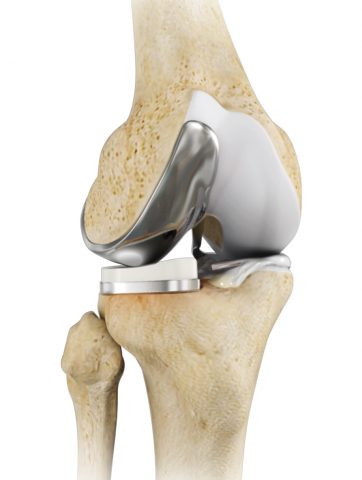
Partial Knee Replacement
A partial knee replacement is surgery to replace only one part of a damaged knee. It can replace either the inside (medial) part, the outside (lateral) part, or the kneecap part of the knee. A partial knee replacement is an alternative to total knee replacement for some patients with osteoarthritis of the knee. This surgery can be done when the damage is confined to a particular compartment of the knee. Surgery to replace the whole knee joint is called total knee replacement.
Patients with osteoarthritis that is limited to just one part of the knee may be candidates for a partial knee replacement.
Your knee is divided into three major compartments:
1. Medial Compartment (i.e., the inside part of the knee),
2. Lateral Compartment (i.e., the outside part), and
3. Patellofemoral Compartment (i.e., the front of the knee, between the kneecap and thighbone).
In a partial knee replacement, only the damaged compartment is replaced with metal and plastic. The healthy cartilage and bone in the remainder of the knee is left alone.

Who is a candidate for partial knee replacement?
Patients with medial, or lateral, knee osteoarthritis can be considered for partial knee replacement. “Medial” refers to the inside compartment of the joint, which is the compartment nearest the opposite knee, while “lateral” refers to the outside compartment farthest from the opposite knee. Medial knee joint degeneration is the most common deformity of arthritis.
Other factors to consider:
• You may want to consider a knee replacement if your knee pain persists despite your taking anti-inflammatory drugs and maintaining a healthy weight.
• Your doctor will ask you to identify the area of pain in your knee, then check your range of motion and the knee’s stability. An X-ray of the knee will determine your eligibility for partial knee replacement. However, your surgeon may not know for certain if you are a good candidate until the surgery has begun.
• You must have an intact anterior cruciate ligament, a sufficient range of knee motion, damage to only one compartment, and a stable knee. The angulation of the deformity is also considered.
• In the past, a partial knee replacement was considered only in patients older than 60 years who were sedentary but younger, more active patients are increasingly being considered.


